The New Tissot PR516 Chronograph Mechanical (Incl. Video)
The return of a classic 1970s racing chronograph by Tissot.
Drawing from over 170 years of watchmaking heritage, Tissot frequently delves into its archives for inspiration. The company has a penchant for reviving iconic models that have left an indelible mark on its history. Consider any timepiece from the Heritage series – the 1973 Chronograph, the 1938 Heritage COSC, the Visodate, or the 1938 Telemeter – each serves as a contemporary homage to timeless designs, blending vintage aesthetics with modern technology for a perfected appeal. In a nod to the emblematic PR516 series that gained popularity in the 1960s, Tissot has recently introduced a range of new models. Among them is a manually wound chronograph, which you’ll be able to discover in our latest video review.
The History of the Tissot PR516 in a nutshell
To truly appreciate the significance of a heritage timepiece like the new Tissot PR516 Chronograph Mechanical, a brief journey into its background is essential, revealing the genuine inspiration behind its design. The roots of the PR516 model line can be traced back to its inception in 1956, where the “PR” originally denoted Particulièrement Robustes, which can be translated as particularly robust. In 1965, the collection underwent a remarkable transformation under the visionary guidance of Swiss designer Lucien Gurtner. Gurtner’s touch also brought forth a distinctive steel bracelet adorned with prominent perforations, evoking the spirited essence of a racing steering wheel.
Tissot’s affiliation with motorsports had already begun to unfold back in 1958 when Swiss driver Harry Zweifel immortalized his partnership with Tissot, sending a signed photograph from behind the wheel of his sports car alongside the message: “My Tissot is by my side at every race.” Thus, the PR516 was heralded (and successfully marketed) as the quintessential timepiece for racers, swiftly establishing itself as a cornerstone product line for Tissot throughout the 1960s and early 1970s. Noteworthy is Peruvian rally pilot Henry Bradley’s affection for his Tissot PR516, as he proudly emblazoned the watch’s name on his Ferrari – out of pure passion, the brand reports.

The Tissot PR516 also found its place in cinematic history, securing ample screen time as James Bond’s watch in “Live and Let Die,” sharing it with a super-magnetic, buzz-saw-bezel-equipped Submariner 5513 and a Hamilton Pulsar P2 2900, as Roger Moore sported all three timepieces in the 1973 production – and famously wore the PR516 off the set, too.

As time progressed, the PR516 underwent various iterations, offering stainless steel or gold-coloured cases and featuring a range of functions including date, day/date, culminating in adding a Lemania 873-powered manually wound chronograph three years after its relaunch. It is precisely this PR516 chronograph that serves as the cornerstone of inspiration for the new model.
The New Tissot PR516 Chronograph Mechanical
The comeback of the Tissot PR516 is done with a solid-looking tapered stainless steel case, echoing the design aesthetic prevalent in sports watches of the 1970s. It features a combination of satin-brushed and polished surfaces and exudes a distinctive charm. With a 41mm diameter and a thickness of 13.7mm, the proportions align with contemporary sports chronographs (the 1970s inspiration measured 36mm). It’s not particularly thin but a PRS 516 Automatic Chrono sits well above 15mm in thickness. Despite the seemingly substantial dimensions, the watch remains surprisingly comfortable on the wrist due to its short lugs, although its weight ensures a noticeable presence throughout the day.
Retaining the essence of its 1970s predecessor, the pushers and crown maintain a similar design, contributing to the overall vintage vibe. The bezel, equipped with a tachymeter and pulsometer scales printed under a mineral glass insert, incorporates Super-LumiNova highlighting for the pulsometer, and luminous markings for the tachymeter, which ensures legibility in low-light conditions. This luminous treatment extends to the baton-shaped applied hour indices and hands.
Shielded by a glassbox sapphire crystal with anti-reflective coating, the dial offers a pleasant viewing experience, adding character to the timepiece. The colour scheme and layout of the predominantly matte black dial pay homage to the inspirational reference. The 30-minute chronograph counter resides at 3 o’clock, the 12-hour counter at 6, and the running seconds at 9. Silver-coloured rings with concentric circles adorn all three sub-dials, providing decoration and background for clear markings, with numerals printed inside the rings. Notably, the first 5-minute sector on the 30-minute counter is painted blue, a nod to the 1970s design intended to highlight the 5 minutes before the car (or yachting) races start.
The chronograph hands are painted in a vibrant orange hue for distinction; another practical design element is a narrow pointer-tip on the minutes hand, reminiscent of the original, facilitating easier reading of the minutes track markings printed on the dial’s periphery. And a pleasing touch, it has a no-date display.
Surprisingly, Tissot opts for a contemporary variant by not adorning the watch with a vintage logo and model name, unlike the original. Instead, the modern touch is the logo that includes the mention of 1853, serving as a reminder of the brand’s longstanding history.
The modern touch of a display caseback reveals the inner workings of the Tissot PR516 Chronograph Mechanical, showcasing a manually wound Valjoux A05.291 movement. The brand informs that this cam-actuated chronograph movement was explicitly crafted for this watch and derived from the Valjoux 7753. For the A05.291, the automatic winding mechanism of the 7753 was removed and replaced with a bridge marked with a Tissot 1853 logo. This adjustment is complemented by a new winding barrel design, providing the watch with an impressive 68 hours of autonomy for an enhanced user experience.
To protect the movement against magnetic fields, the balance spring is crafted with Nivachron, while shock resistance is assured by incorporating an optimised system, the Nivachoc. Operating at 28,800 vibrations/hour, the A05.291 also promises commendable accuracy, staying within the range of +/- 5 seconds per day. It thus undergoes the same optimization process as the automatic versions found in the Telemeter 1938.
The new Tissot PR516 Chronograph Mechanical is worn on a three-row stainless steel bracelet featuring a quick interchangeable system – which will make it easy to swap for a strap, with a 20mm lug width. The bracelet is closed with a folding clasp. There’s no quick fine-adjustment system to be found, but still three holes to micro-adjust the length.
Priced at CHF 1,600 (excl. taxes) or EUR 1,975 (incl. taxes), the Tissot PR516 Chronograph Mechanical offers great characteristics and excellent value for money, and while keeping close ties to the original – the looks, the spirit and the manually-wound movement – comes fresh and modern.
For more details, make sure to check the video at the top of this article or visit tissotwatches.com.



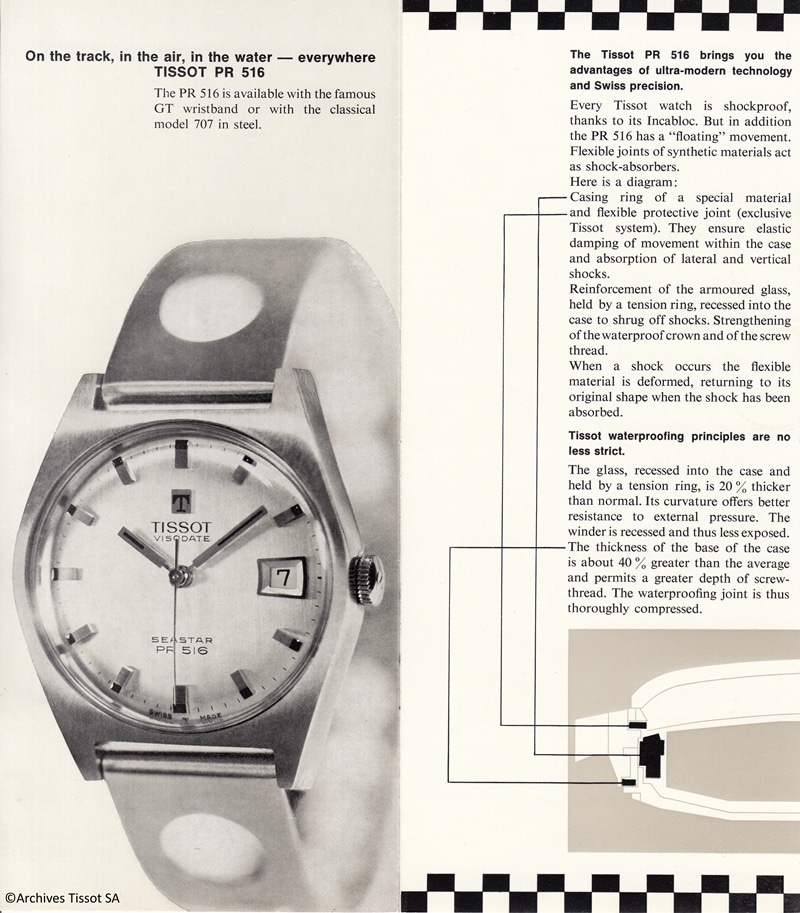
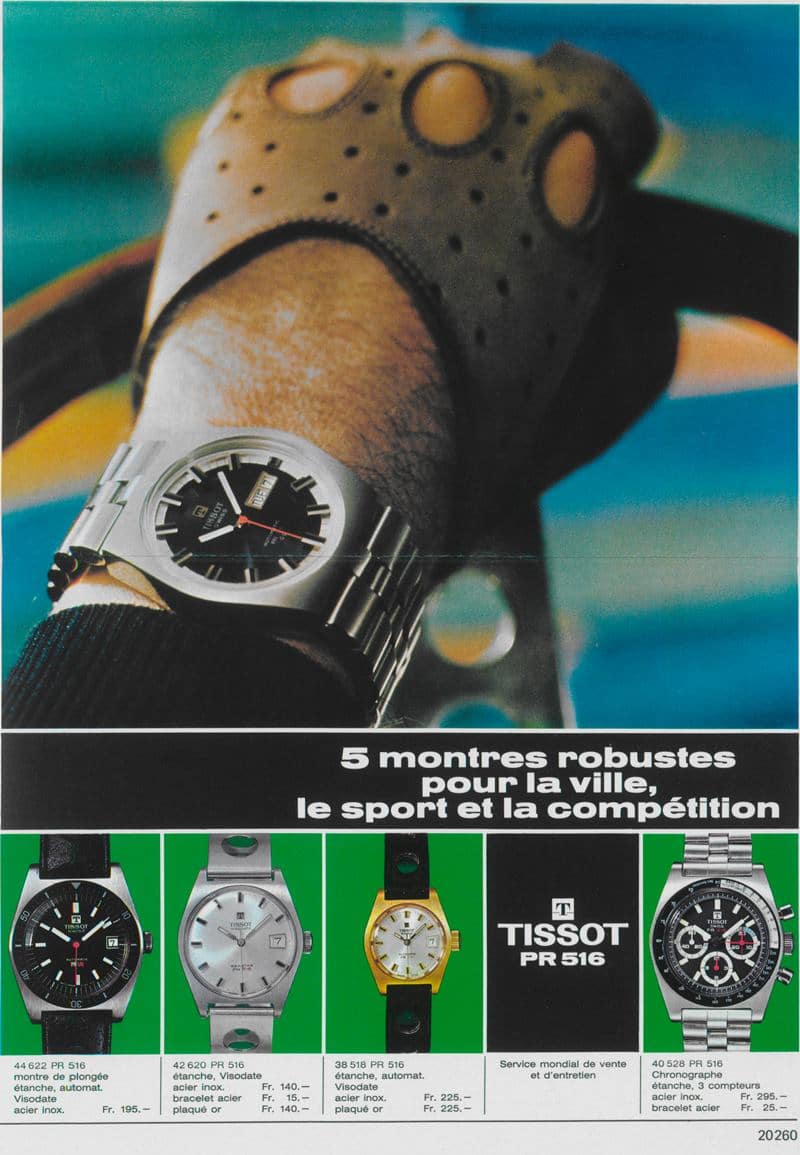
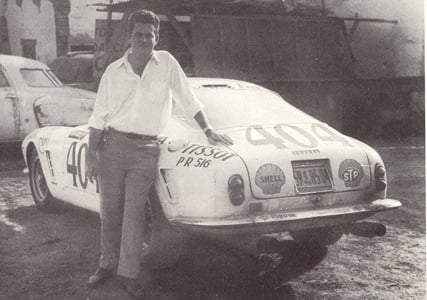

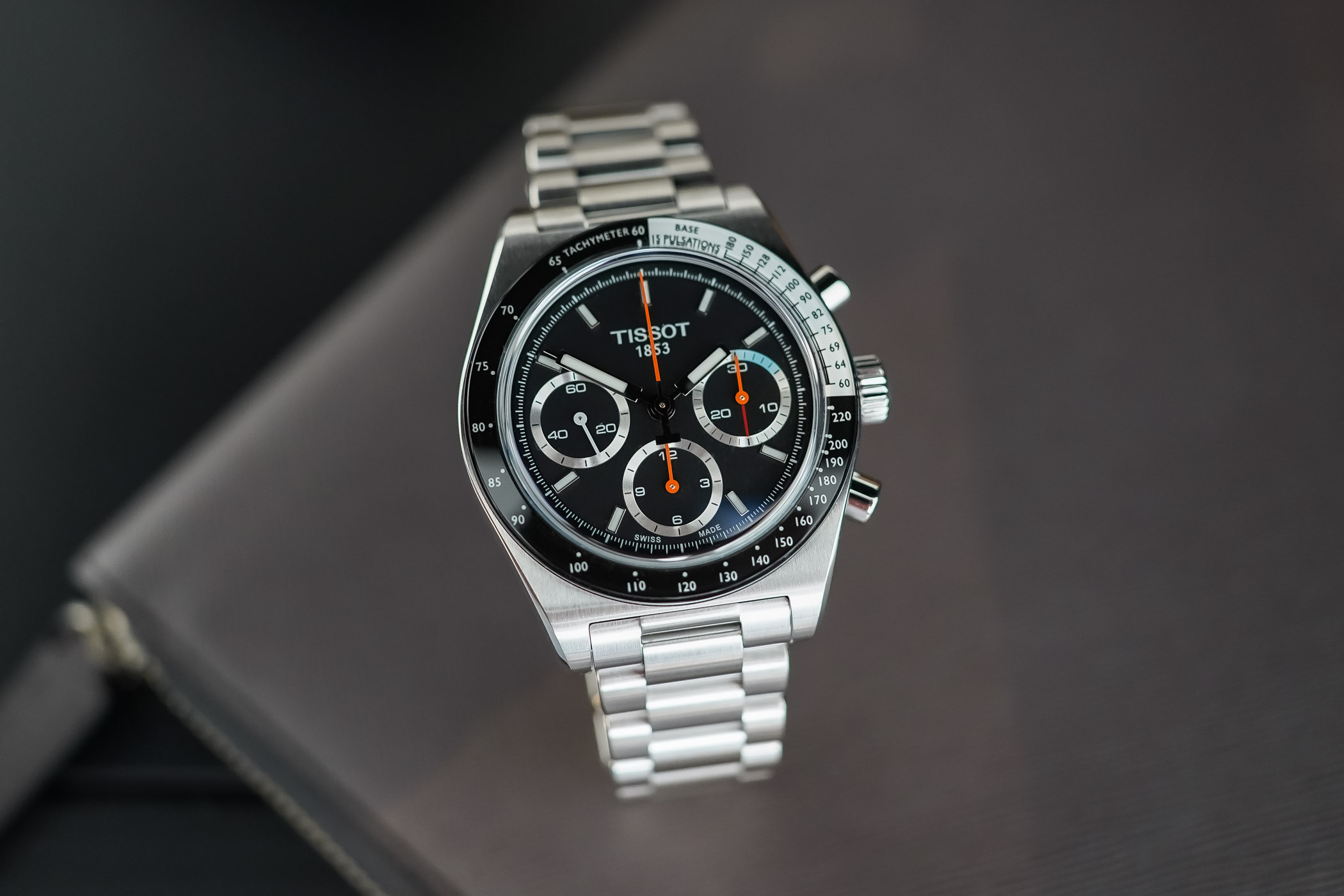
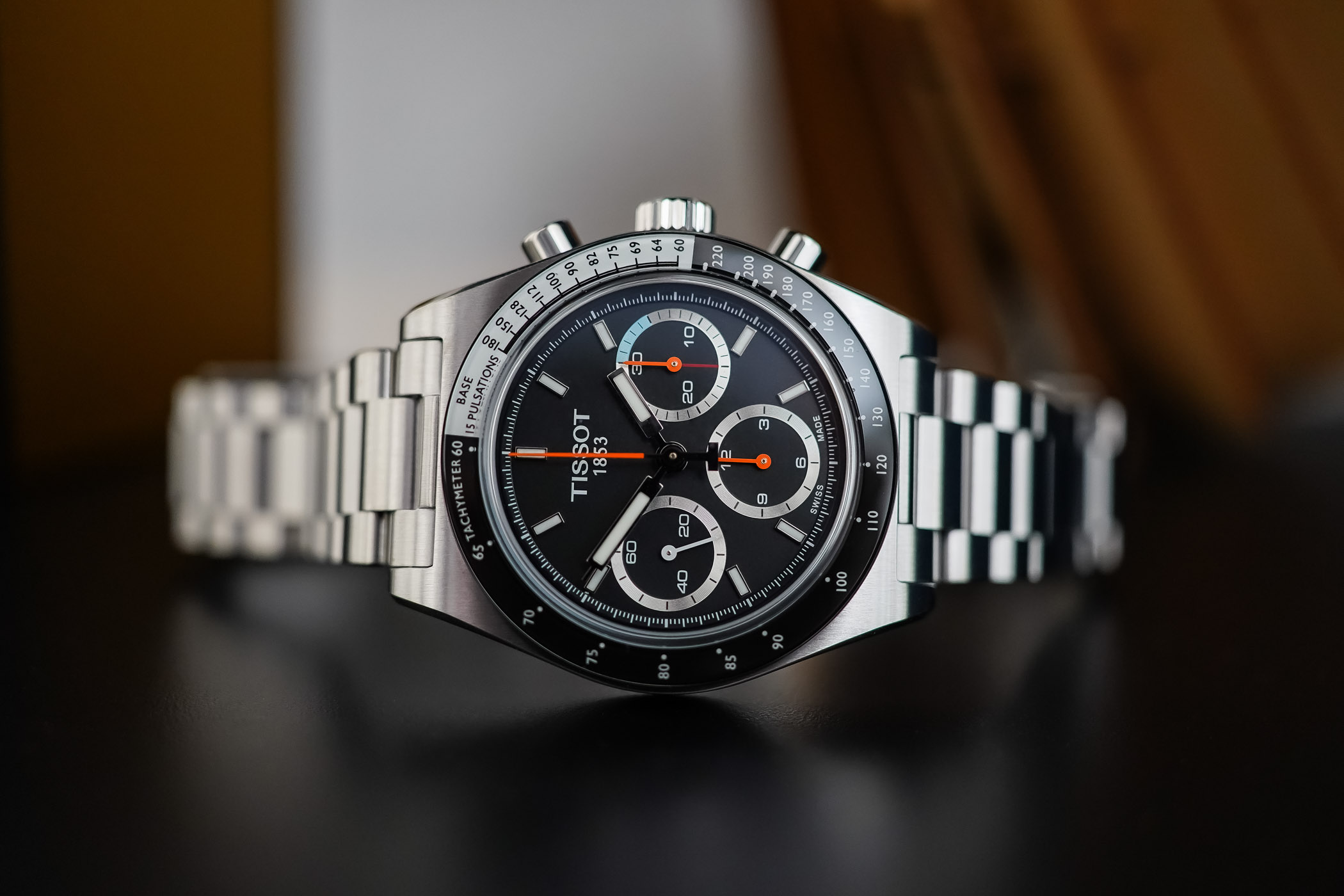

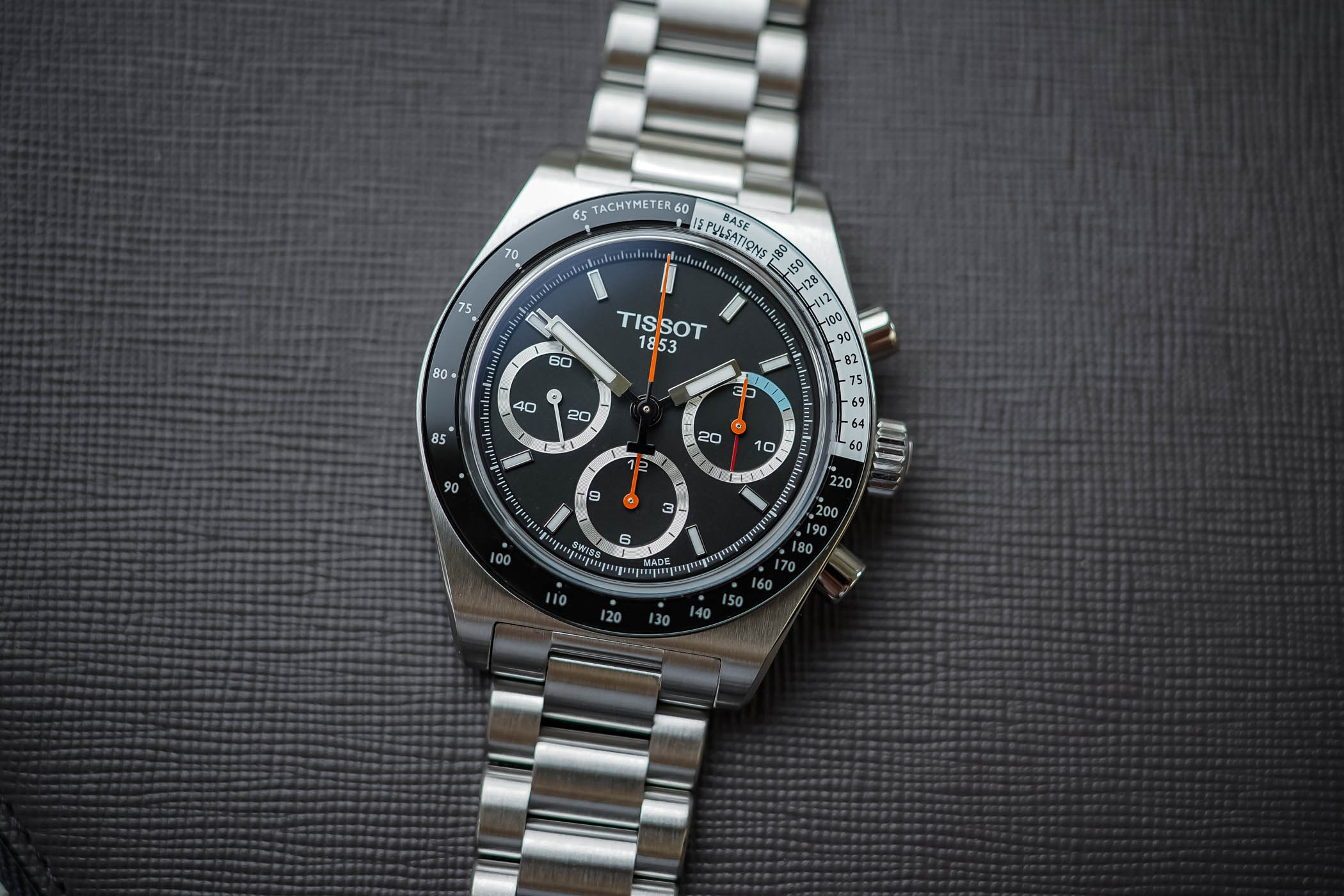


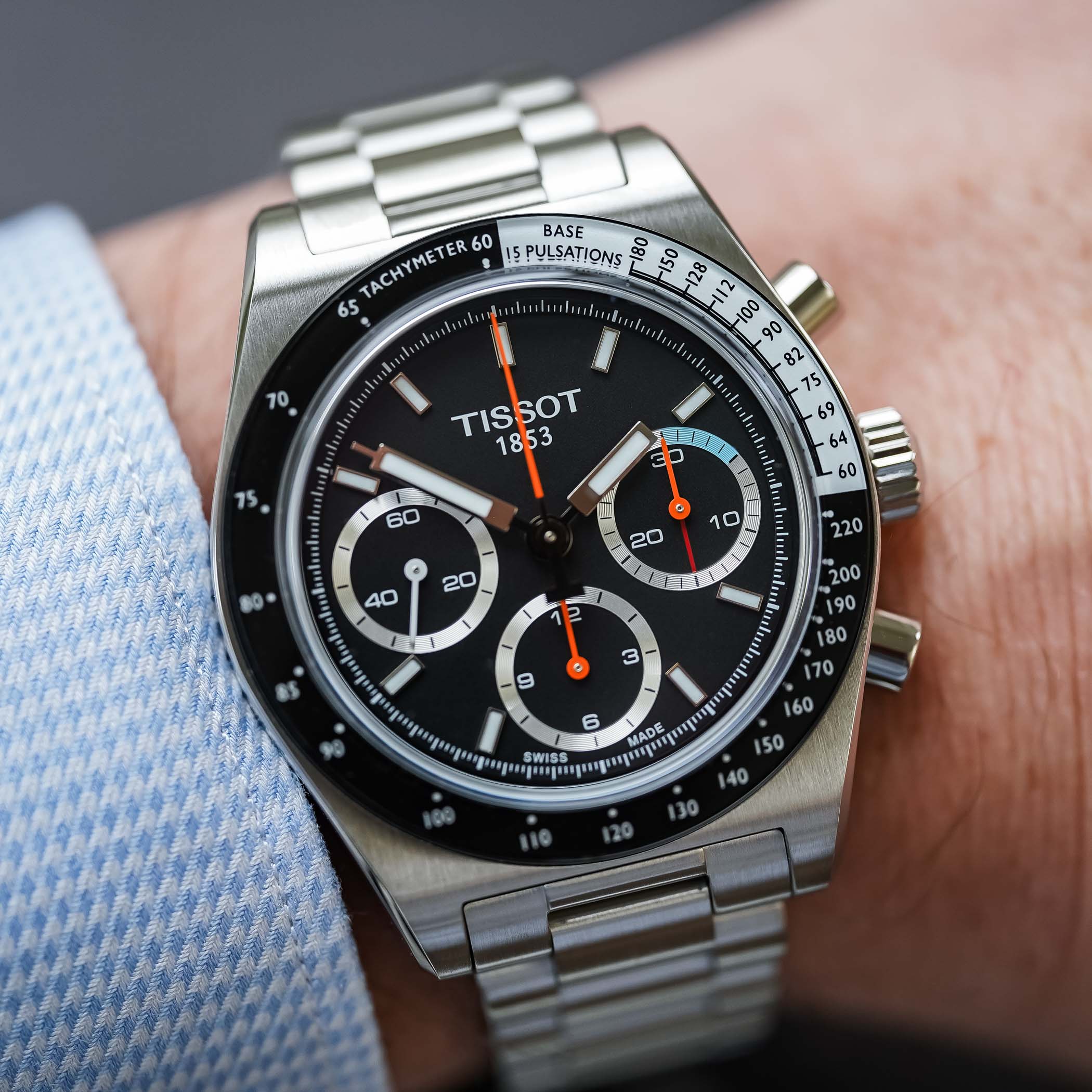
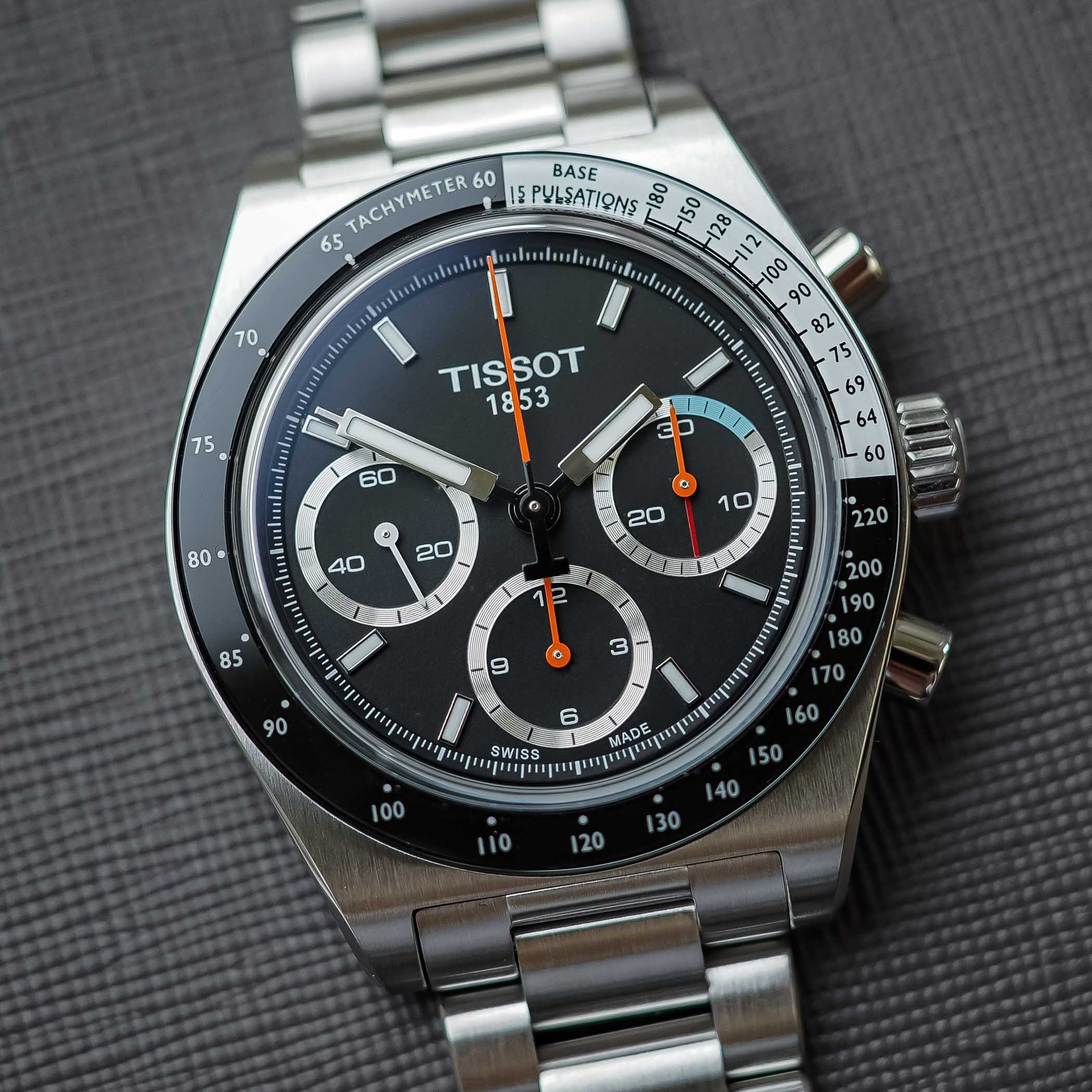







9 responses
Nice watch, but a solid caseback would be a better option… that movement is so ugly…
Yes but no. As mentioned above, not elegant and a common problem with automatic movements converted to manual wind.
Nice release. Kudos to Tissot for sticking to a manual wind to bring the thickness down. While the movement is rather utilitarian, I think it’s still cool to see it working through the see through case back. My only wish is that they would drop the use of 1853 on their watches. It makes them look cheap in my opinion. Can’t imagine people are looking at a Blancpain or Breguet and wondering when the brand was founded before deciding to buy one.
Love the look, but why make the bezel out of mineral glass while the crystal is sapphire? Seems like a cheap cost-cuttig measure.
They could have sent one with the chrono hand centered over the 12 o’clock index …
What’s the difference between this watch and the 1973 heritage I see. One is manually wound and the other is Automatic
@Anthony – the Heritage 1973 you can see here (https://monochrome-watches.com/tissot-heritage-1973-chronograph-review-price/) is indeed an automatic watch. The base of the movement is the same – Valjoux 7753 – but with different winding systems. And of course the designs are very different
I think what someone should do, if at all possible, is design a bridge that actually looks nice – a tip of the hat, at least, to the beauty of the old 4-5 bridge movements.
Like this, it looks quite obviously like it’s a modified automatic.
Bring back proper bridge architecture!
Why are those hands so disproportionally short? And why is the thickness still nigh 14mm when brands like Excelsior Park and Hanhart manage to squeeze a hand wound Valjoux 7750-clone (Sellita) into a 12,9 – 13,0mm space? It’s not the worst of designs, but I get “cheap and cheerful” vibes.